
Deep diving specialty
Certification card
Equipment 1
Equipment 2
Equipment 3
Equipment 4
Prevention for decompression sickness 1
Prevention for decompression sickness 2
Prevention for decompression sickness 3
Symptoms of decompression sickness
Treatment for decompression sickness
Prevention for Nitrogen Narcosis
Treatment for Nitrogen Narcosis
Plans and rules
Changes in air consumption rate
Calculation of dive time limit
Depth limit
Boat support
Diving preparation
Descent
Underwater action
Ascent and exit
Emergency action
|

|
■Check residual air pressure
Deep diving use a lot of air, so check residual air pressure in each of the following steps a) to e).
Also, do not use up all the air in the tank during the dive, and always leave air at least 50 bar as a reserve.
|
|
|
a)Before entry
Carefully check for air leaks from the equipment you set up
Apply a neutral detergent diluted with water to the connection point of the tank valve and medium pressure hose, and check for air leaks.
Also, check if there are any air leaks from the safety second and main regulators by leak sound and bubbles in water . |
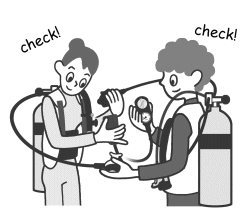 |
b)Immediately after descent
Check for air leaks from your equipment and your buddy equipment and for abnormal thing, during entry and descent.
If there is small air leak from the buddy tank valve etc., let the buddy and the team leader know and stop the dive. |
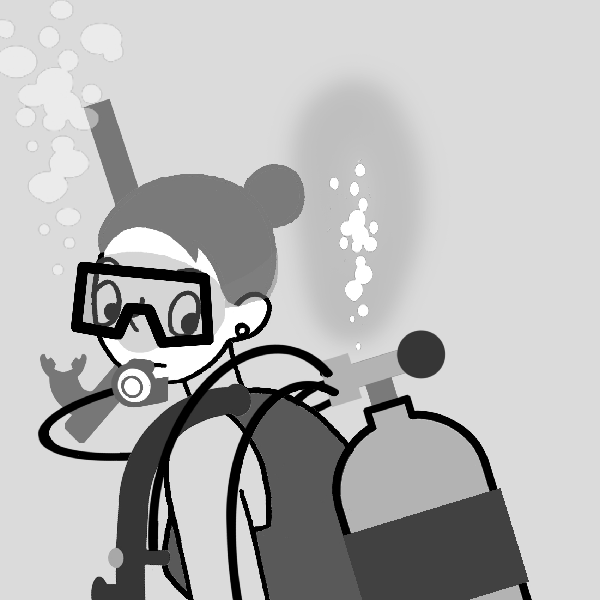
No air leaks |
c)During diving
Check the residual pressure gauge frequently as during deep diving air consumption is higher than usual.
|
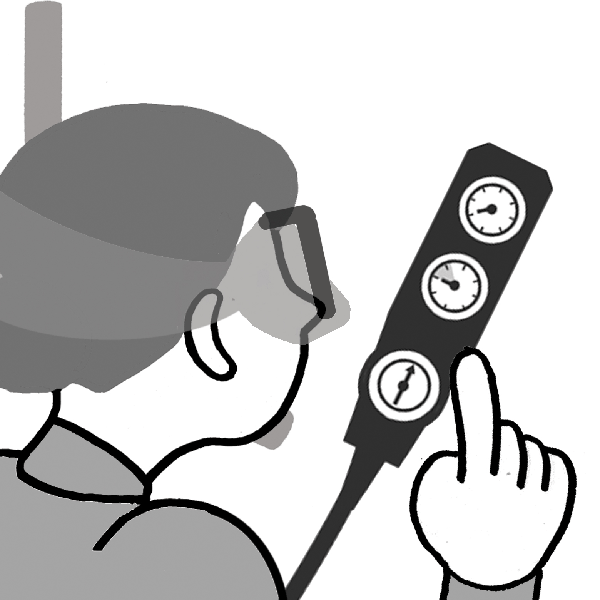
Strong attention to residual air pressure |
d)Before ascent
It takes 3 minutes to ascend from a depth of 30m at a 10m / min ascent rate.
Start ascending with sufficient residual pressure.
If you are using a 14-liter or 12-liter air tank, the time to start ascent is the time at that remaining air pressure is one-third. |
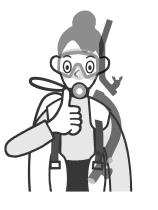 |
e)After exit
Make sure the residual pressure is at least 50 atm.
If you have less than 50 atm, for your next dive, try to make the time to start ascent even faster. |
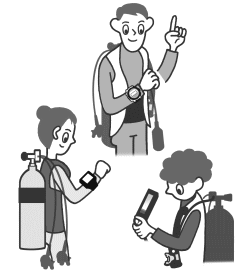
Leave at least 50 atm |
|
|
  |
|

